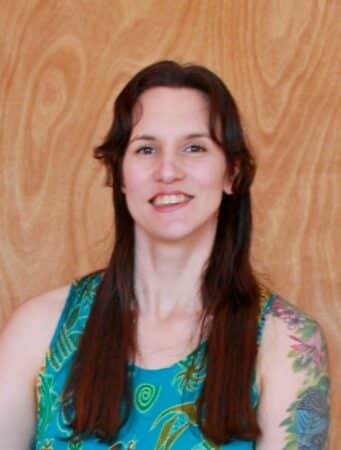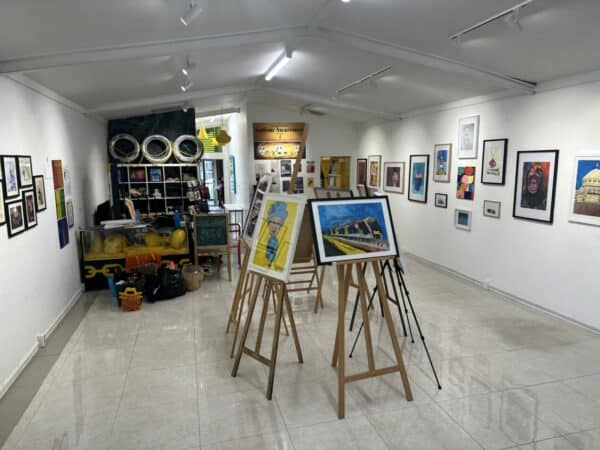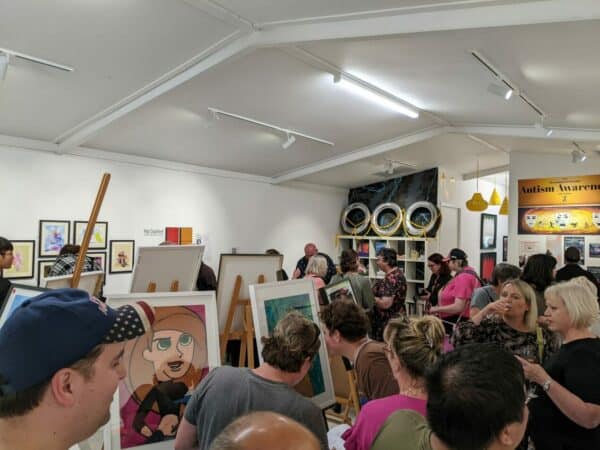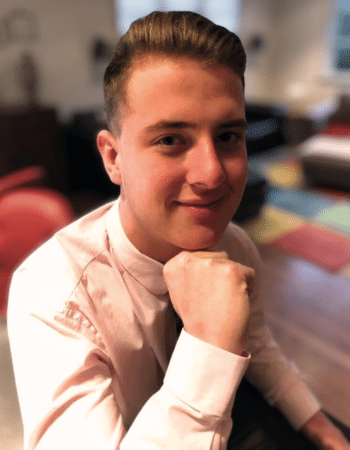The Colour Spectrum art exhibition opened on World Autism Awareness Day 2023 at The Good The Bad Gallery in Glen Innes, Auckland. Curator Haz Crawford spoke to Nicolina Newcombe about his mission to stun the neurodivergent community with a colourful art exhibition.
How did the Colour Spectrum project begin?
I wanted to do something to teach the community around us about who we are as Autistic people. There was an exhibition last year called Autistic Expression run by Xabilities, an Autistic-led group for Autistic people. I said to Tamara Grant, founder of Xabilities, that I wanted to do something similar. Tamara and I ended up working on my exhibition together.
What is the significance of the name Colour Spectrum?
My mum Belinda Johnston helped me come up with the name. It reflects who we are because we are all different.
I know you are an artist. Can you tell me about your art at Colour Spectrum.
I have found that art is a way of communicating. It is something we all share. I created an artwork based on my talent for calendar dates. If you tell me a day, month and year I can tell you what day of the week it was on. There is lots of complicated maths behind it, but I can literally do it in my head.
My art is six coloured sheets of paper with tables of all the calendar dates and days. I made it so that other people could figure out calendar dates for themselves. The work is called Untitled because it is something I can’t put into words. There are multiple meanings behind it.
The opening event for Colour Spectrum was incredible. There was a fantastic turnout from the Autistic community and our supporters. The gallery was so packed I could hardly move. You also put on a sensory space, fire dancers for entertainment, and great kai | food and inu | drinks.
More than 100 people attended the opening night, including two Members of Parliament (MPs): Priyanca Radhakrishnan, Minister for Disability Issues, and Deborah Russell, MP for New Lynn. More than 250 people visited throughout the entirety of the exhibition.
That sounds like a massive undertaking. Tell me about organising the Colour Spectrum exhibition.
I approached a local gallery called The Good The Bad, which hosts exhibitions showcasing the cultural diversity in the area. Then, I found artists who wanted to participate. I also worked with the venue about how we laid it all out. Most importantly, I ensured that everyone enjoyed it and learnt something to take away as well.
How did you curate the artwork?
I sent emails out to lots of different people and organisations. I got a broad range of artworks that all these amazing people had done. There were a lot of pieces from Art for All Auckland. Lynda Scott from Art for All also helped out with the exhibition. Some parents from Sommerville Special School, where my mum is the principal, came forward and said their children wanted to showcase some art as well. The youngest artist was 12 years old.
Were all the artists Autistic?
Yes. It was Autistic Acceptance Month so I decided to focus just on autism.
Did many pieces get sold?
A few. One of my cousins bought a drawing of an electric train. He works in the transport planning industry and he put that drawing on the wall in his office.
You said you made sure everyone else learned something. What did you learn from organising this exhibition?
I learned a lot from having a few challenges. I started recruiting the artists a bit earlier than what worked for everyone else. I had already recruited a whole bunch of artists and I then got a whole bunch of unexpected costs that I had never had to deal with before. That is when I started up a Give a Little page to crowdsource some funding. Xabilities ended up collaborating with me financially as well. There is a lot to putting on an event like this and you have to learn to be resilient and stick to it all the way to the very end.
I also had some anxiety about how others would perceive me. I have grown to be what I call “underneath the radar”, so I had to push myself out of my comfort zone to make sure things were organised. I didn’t want to be in the spotlight because I thought I wasn’t quite ready yet, but I ended up doing it anyway. The outcome was absolutely amazing. I could not have been more proud or more grateful, not just for what I have done, but for everyone else who helped to make it possible.
You have achieved so much. What is next for you now?
While I got a lot of praise for all the hard work I did, ultimately, it comes down to self-praise, self-love and self-respect. I know I can do greater and better things and it never ever stops, even if it gets tough at times in the future. Overall, I’m really honoured and privileged to have been able to do something like this, not just for myself but for the neurodivergent community. Now I am focusing on what I can do next year.
Contributors
Haz Crawford (Ngāi Tahu) is an Autistic artist who competes in the Special Olympics, plays for the New Zealand Mini Golf Federation, and volunteers with a community patrol.
Nicolina Newcombe (DipJ, BA, GradCertNFPM, MMPD) is an Autistic PhD student in Education.
This article first appeared in the Altogether Autism Journal, 2023.






